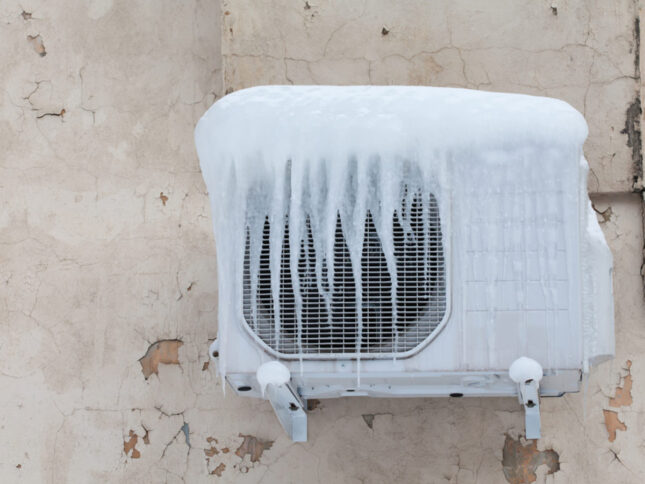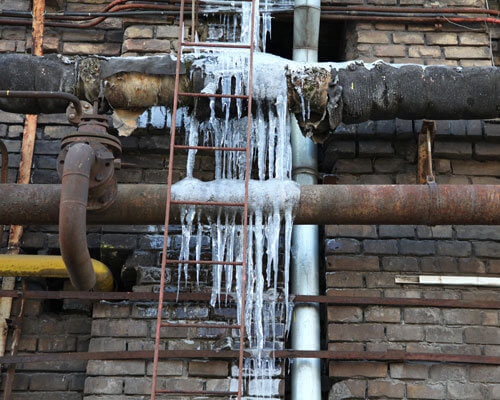Frozen AC Pipe - Identifying and Fixing the Issue Promptly
Frozen AC Pipe - Identifying and Fixing the Issue Promptly
Blog Article
The publisher is making a few great pointers on How can I fix an air conditioner’s frozen pipe? overall in this post below.

Introduction
Finding that your a/c pipeline is frozen can be concerning, particularly throughout warm summer months when you depend on your ac unit one of the most. Understanding what to do in such a situation is important to avoid additional damage to your air conditioning system and guarantee your comfort indoors.
Comprehending the Causes
Numerous variables can contribute to the freezing of an air conditioner pipeline. Comprehending these reasons can aid you resolve the problem successfully.
Lack of Airflow
One typical root cause of an icy air conditioner pipeline is inadequate airflow. When the airflow over the evaporator coil is restricted, it can cause the coil to drop below freezing temperature, bring about ice formation on the pipeline.
Reduced Refrigerant Levels
Inadequate refrigerant degrees in your air conditioning system can likewise lead to an icy pipe. Low cooling agent levels can create the stress in the system to go down, bring about the freezing of dampness on the evaporator coil.
Winter Conditions
In colder climates, freezing temperature levels outside can contribute to the freezing of AC pipes. If your air conditioning system is not appropriately shielded or if there are leakages in the ductwork, chilly air can infiltrate the system, triggering the pipe to freeze.
Dirty Air Filters
Filthy or stopped up air filters can limit airflow in your air conditioner system, leading to different issues, consisting of an icy pipe. It's important to change or clean your air filterings system routinely to guarantee correct airflow and avoid ice accumulation.
Indications of a Frozen A/c Pipe
Identifying the indicators of an icy air conditioner pipeline is important for timely activity.
Lowered Airflow
If you see a substantial decline in air movement from your vents, it might show an icy pipeline.
Ice Buildup on the Pipe
Noticeable ice build-up on the cooling agent line or the evaporator coil is a clear indication of an icy AC pipeline.
Weird Sounds from the Unit
Unusual audios, such as hissing or bubbling, originating from your a/c unit can indicate that there's ice present on the pipe.
Immediate Actions to Take
When confronted with an icy air conditioning pipe, it's essential to act swiftly to avoid more damages to your air conditioning system.
Switching off the air conditioning
The first step is to turn off your air conditioning system to avoid the system from running and intensifying the issue.
Checking for Blockages
Check the location around the indoor device for any type of obstructions that might be blocking air flow, such as furniture or curtains.
Defrosting the Pipe
You can make use of mild techniques like positioning towels soaked in cozy water around the frozen pipeline to aid thaw it gradually.
Preventive Measures
Taking safety nets can aid prevent future occurrences of a frozen air conditioner pipeline.
Routine Maintenance Checks
Schedule regular upkeep consult a professional HVAC technician to make sure that your air conditioning system is running effectively.
Altering Air Filters
Routinely change or cleanse your air filters to stop air flow restrictions and maintain optimal performance.
Protecting Exposed Pipes
If your a/c pipelines are revealed to chilly temperatures, consider insulating them to prevent cold during winter season.
Looking For Professional Help
If DIY techniques fall short to resolve the concern or if you're uncertain concerning how to proceed, it's finest to seek assistance from a qualified HVAC service technician.
When DIY Methods Fail
If your attempts to thaw the pipeline or address various other issues are unsuccessful, it's time to call a professional.
Importance of Hiring a Professional HVAC Technician
A qualified HVAC specialist has the experience and tools necessary to detect and repair concerns with your air conditioning system safely and properly.
Conclusion
Dealing with a frozen a/c pipeline can be a discouraging experience, but recognizing exactly how to respond can assist minimize damages and restore comfort to your home. By comprehending the reasons, acknowledging the signs, and taking prompt activity, you can properly resolve the concern and avoid future events.
G UP? HOW TO FIX IT?
It happens all over America. And the rest of the world probably. It’s the hottest day ever and for some darn reason your AC isn’t cooling the house. You fiddle with the thermostat to try and fix the problem. Nada. All you can do now is go outside and check the AC unit. You make your way there and find your air conditioner unit is frozen! But how?
In this post we’ll cover how you can tell that your air conditioner has frozen (other than the obvious reasons), what could have caused the freeze, and some of the things you can do about your AC freezing up. And if you have a frozen heat pump condenser, read our blog about it to learn what to do! But remember, it is always best to avoid your AC freezing up with an AC tune up. And if you are moving into a home, it's critical to get HVAC inspection so that you are aware of an AC problems before you move in.
Keep reading and you may be able to fix the frozen AC yourself. If you can’t, call an HVAC specialist. If you live in Maryland, call SuperTech HVAC for AC repair. We’ll take care of it.
How Does An Air Conditioning Unit Work?
How you probably imagine an AC works is wrong. Contrary to popular belief, an AC system does not inject cool air into a building. Instead, it removes the heat from inside and transfers it outside. Cool huh? (Pun intended).There are 4 major components among the 3 stations of an air conditioning system: the evaporator coil, the compressor, the condenser, and the refrigerant – a special chemical that links everything together through a closed loop system.
Station 1:
Warm indoor air is sucked into the return vent, through a filter, and blows over the evaporator coil. The heat is absorbed into the cold refrigerant, turning it from liquid to gas. The air, which is now cool, is blown back into the home to areas that your thermostat, i.e. you, has decided.
Station 2:
The refrigerant makes its way outside the house to the compressor, which squeezes the warm refrigerant, raising its gaseous temperature even more.
Station 3:
When the super hot vapor refrigerant reaches the condenser, the last step, the heat is expelled and absorbed into the outdoor air. The refrigerant instantly cools, which changes it from gas back to liquid form. The cold liquid refrigerant is now ready to return to station 1 and repeat the process.
Is Your AC Freezing Up? Here Are The Signs:
As you may have guessed, your air conditioner unit freezing up on a hot day is not normal.
If this happens, there's no need to panic. Often the issue can be solved with a little troubleshooting. If the AC unit is left frozen for too long however, you may find yourself with a bigger problem.
First things first, how do you know your AC is frozen?
Well, the obvious sign is the ice on your refrigerant line-set pipe. Simply check between your outdoor AC unit and your home's exterior wall to see whether your AC line frozen.
You might also have a frozen evaporator coil. This one's not as easy to check. You'll need to open a panel on the indoor unit to inspect. Don't do this unless you're handy. If you aren't, call an HVAC pro like SuperTech HVAC or you may damage something in the process.

As an avid reader about How can I fix an air conditioner’s frozen pipe?, I think sharing that piece of content was smart. Do you know somebody else who is fascinated by How can I fix an air conditioner’s frozen pipe?? Please feel free to promote it. Many thanks for your time. Come back soon.
Article Report this page